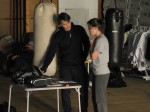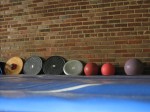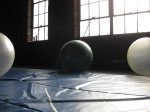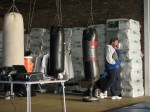Originally posted by Steve Klausmeir. -R
During a recent conversation, Bob said practicing kata without having developed the prerequisite skills and attributes is like someone trying to appreciate a limerick who can’t even speak English. I thought that was a wonderful way of explaining why the practice of kata usually doesn’t result in real fighting ability. Most people can’t understand the meaning of the kata, because they don’t even know the words, so to speak. A good deal of time must be spent on learning the fundamentals of the language, before we can appreciate poetry.
So, what are the fundamentals? One way of looking at a martial art is that a small set of physical and mental attributes are required to develop a slightly larger set of skills. Then, these skills form the basis of an even larger set of techniques. Each kata is meant to function as a mnemonic and includes a variety of techniques performed within an imagined strategic context. Pretty high level stuff, huh? You wouldn’t try teaching a small child to speak English by having them read Shakespeare, but a lot of karate people think they are learning to fight by practicing kata. I disagree.
The attributes that make someone a good fighter are fairly obvious. The training methods used to produce them are not. At TKRI, Bob’s knowledge of modern sports science and corrective exercise principles informs everything we do. Each class, we spend a lot of time stretching our ankles, hips, and shoulders. Tight muscles can inhibit a joint’s range of motion and result in movement compensations. If you can’t move, you can’t fight. Also, we activate the core muscles by performing front and side planks. These require us to stabilize the shoulder joint, too. Strong core muscles allow us to effectively transfer momentum from the ground, through the waist, and out the arms. If you can’t hold the plank position for at least 30 seconds, you shouldn’t be punching. It’s as simple as that.
In addition to these foundational exercises, and others, we do a lot of balance and power training. At the end of our last power cycle, I was able to catch and throw a six pound ball with one hand, while standing on a wobble board. I felt pretty good about that. And, squats emphasizing eccentric stabilization combined with agility ladder training have definitely put some extra bounce in my step. These kinds of things are the attributes that will allow us to develop fighting skills. No matter what you are trying to do to an opponent, your body will always be the delivery system. Fighting is an athletic endeavor, and the same things that make someone a great football player, gymnast, or track and field star, also make you a better martial artist. Think about it. How much more confident would you be in your next sparring session, if you were put together like Bo Jackson was back in the day?
After a certain level of athleticism is achieved, you can just expect your body to respond the right way. When you move your center, your feet will sort of automatically end up in the best position for whatever you’re doing. But, in the beginning, an important mental attribute to develop is the awareness of your body, or kinesthetic sense. If you are doing floor bridges and your hamstring on one side engages more than the glute, something’s wrong. The most important thing is how a movement feels to you, not what it looks like. If you are able to mimic your instructor’s kata moves exactly but don’t have the feeling of being “stacked,” then it’s no good. Bob says we have to discover the best way to perform the techniques based on our own unique morphology. You can’t do that, if you’re not “in tune” with your body.
The specific skills necessary to execute a technique properly are a little less obvious and will have to be the subject of a future article. But, you get the point. Kata practice can be an enjoyable and rich experience for someone who has already mastered the basics. For someone just starting out, they are virtually useless as a training device. There are much better ways to develop the fundamental attributes and skills required in fighting. And, that’s what is special about Bob’s method. He’s put together a system that introduces skills gradually through a series of exercises and drills. You don’t have to start out being a super athlete. An “average Joe” can get there by taking baby steps. At TKRI, nobody gets left behind. That’s what it’s all about.









 are available here.
are available here.